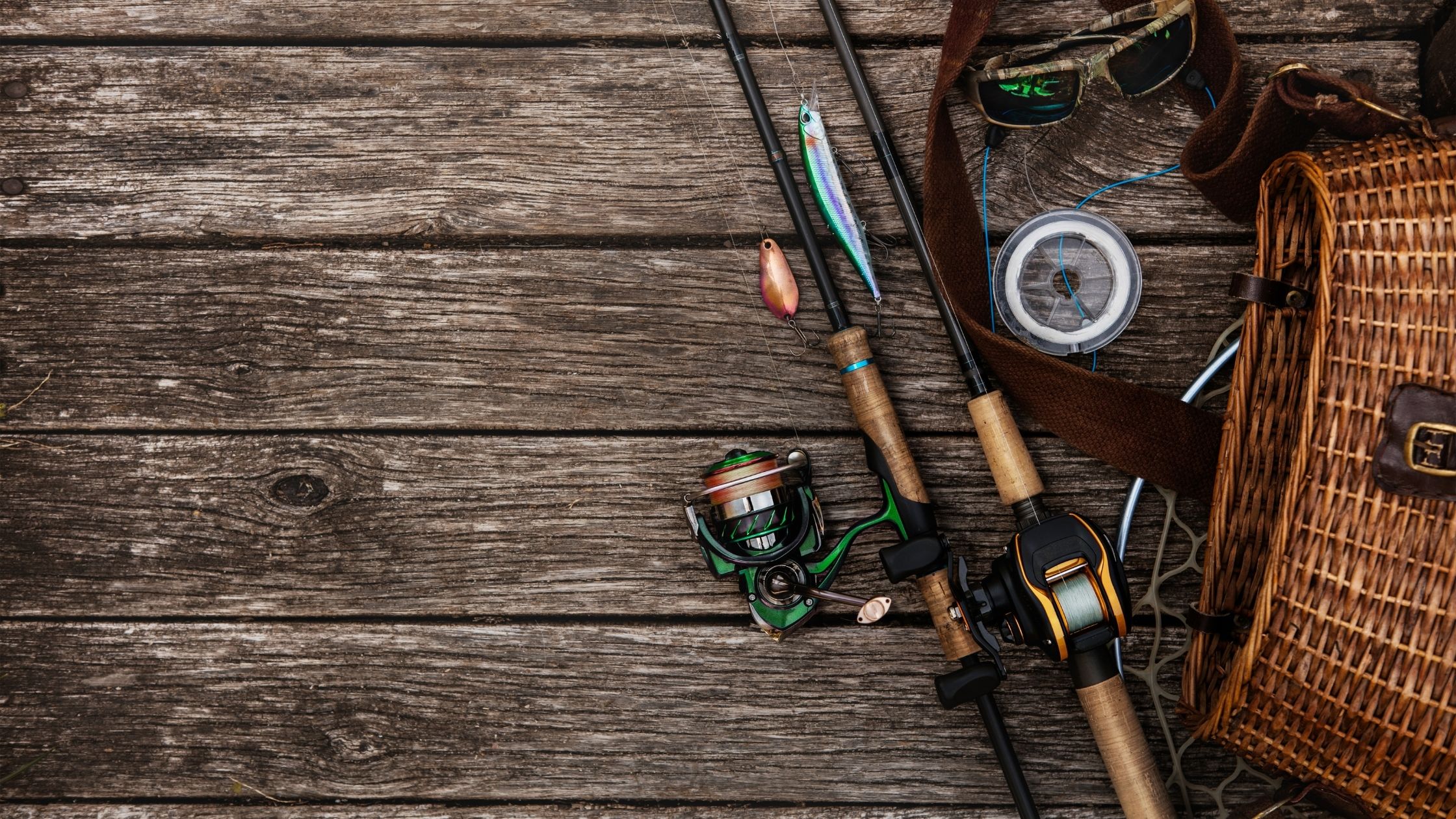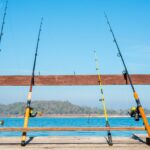After a long, stressful week at work, who doesn’t love heading out to the nearby lake with their fishing rod and just relaxing in nature. The sound of the birds chirping and the gentle movements of the lake as you set your bait and prepare to make your catch is enough to rest a fatigued mind. Crack open a can of icy cold beer while you wait to feel a tug on your fishing line, and life is good!
The first mention of the fishing reel dates back to the Song dynasty in China. It was found in a well-known Chinese painting of an angler fish on a reel, dating back to 1195 AD. Yes, this makes fishing reels even older than the Industrial Revolution! Some historians believe that fishermen have been using reels since the middle of the 3rd century AD.
However, those reels were nothing like the ones we use today. All they did was store the extra line to keep it from getting tangled on the rod. Modern fishing reels have come a long way from that, now coming in many different types with various functions.
The modern fishing reel was invented by a watchmaker, and its design hints at it quite perfectly when you think about it. George Snyder from Kentucky created the primary template on which the modern reel was formed in 1803. He introduced the spindle in the reel and designed it to wind the line four times for one turn handle. Back then, the reels were made of materials like cotton, silk, or even horse hair! Nowadays, that would raise alarms for animal abuse!
The modern fishing reel is quite different from the ones used back in the day. They are designed to streamline your fishing day and make the process more enjoyable. However, before you plan out your day of relaxation, you need to consider what type of fishing reel would be perfect for your rod. Let’s look at the different kinds available before we discuss what factors you should look out for.
Types of Fishing Reels
Having the correct type of fishing reel can make or break your day. It forms the backbone of your fishing session and can help you get a better catch. But, knowing what kind to pick can be pretty confusing. With so much variety available in the market, even seasoned fishing enthusiasts tend to get overwhelmed.
To make things easier, we have compiled a list of all the types of fishing reels you can pick from, along with their general uses. So get ready to fish out your perfect reel!
Electric Fishing Reels
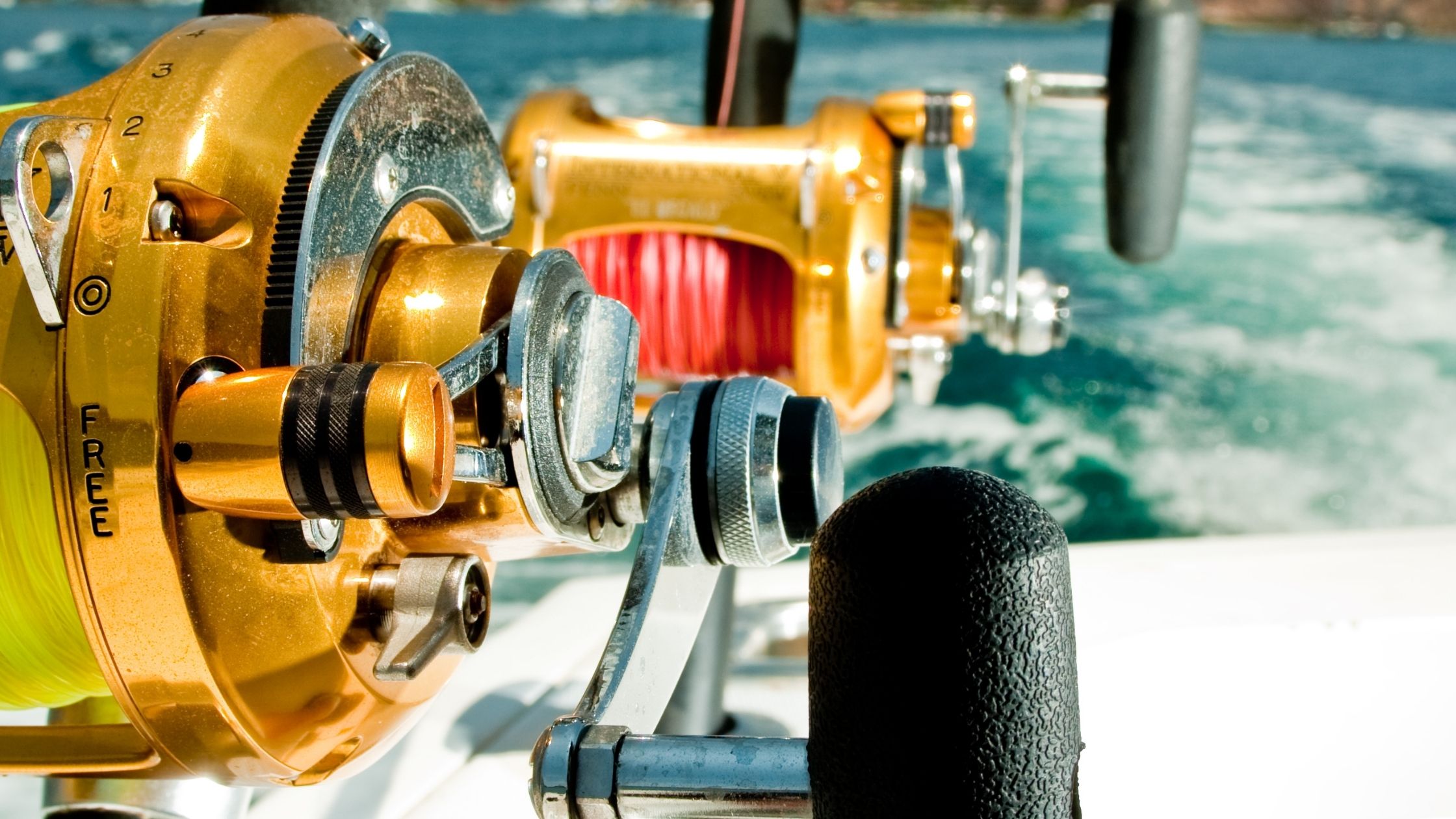
If you’re going to fish in really deep waters, a power assist electric reel is the perfect choice for you! Electric reels are meant for deep dropping towards low depths ranging up to several hundred feet. You can even use them for kite fishing!
These reels are big, fast, and conventional. You can clip them onto a 12V battery, use the lithium battery back they come with, or even plug them into a receptacle on deck. The best features of electric fishing reels are the built-in LCD readout depth counters and jigging functions.
Electric fishing reels are relatively new to the market and are designed for overhead rods. However, the modern design paired with optimal functionality at a low cost makes them a favourite among fishing enthusiasts.
See my recommendation in amazon
Fly Fishing Reels
Fly fishing reels feature a big spool with a grip attached to the outer edge of the spool. These are designed to be installed on fly rods and come with a simple construction using a disc-type drag system for consistency and friction resistance.
These reels are meant for single-action reels, and they work by stripping the line off your spool with one hand as you cast your rod out to the water with the other. Their only function is to store the line and provide ample drag if a fish makes a long run.
Their most redeeming features are their lifespan and lightweight, making them exceptionally easy to use and travel with.
Ice Fishing Reels
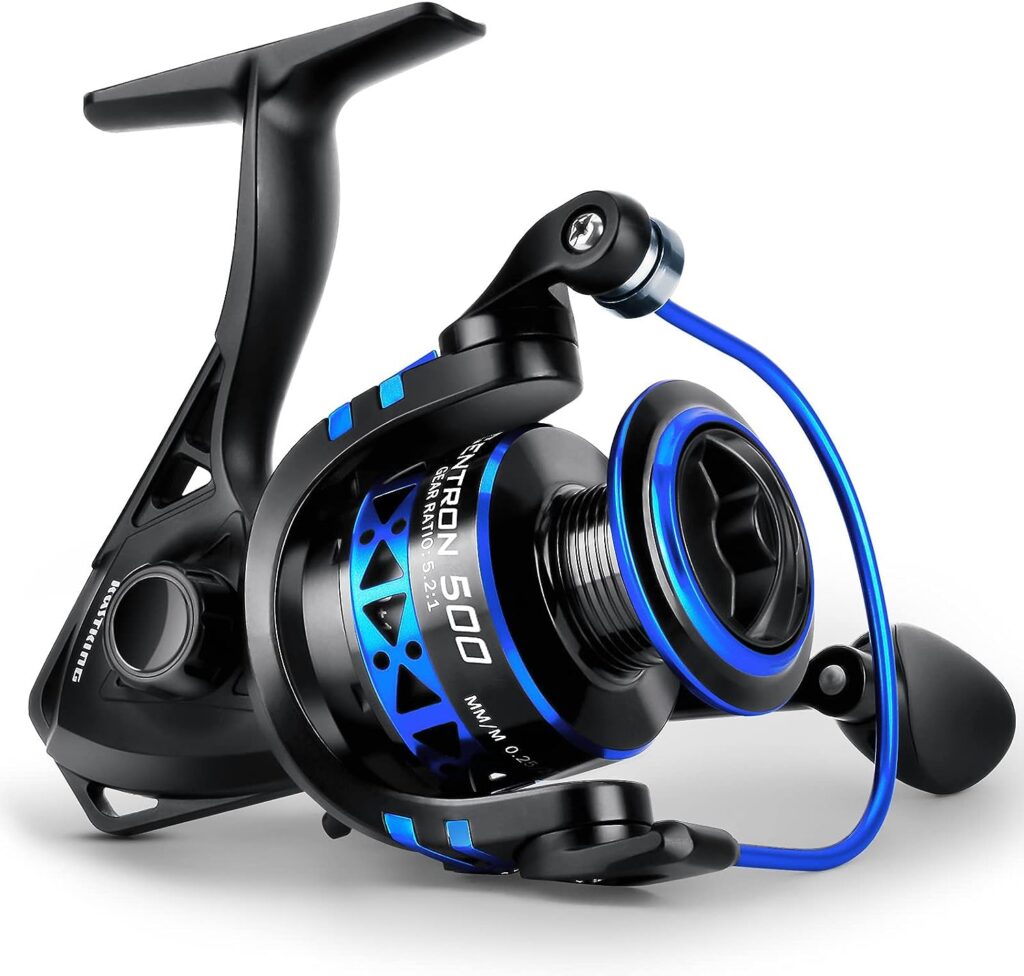
Do you live in a region with colder climates? Perhaps you aren’t too big a fan of the sun shining down your face and prefer doing outdoor activities once winter arrives. In either case, an ice fishing reel would be the best choice for you.
Overhead Fishing Reel
Overhead reels are only meant to be fitted on overhead rods. Instead of casting out, they are meant for lure or bait fishing to troll or feed out the line below your boat. Like a baitcasting reel, your overhead reel will sit on top of the fishing rod and have immediate line contact. This increases your spool control which is extremely useful in jigging and dropping baits.
While most overhead fishing reels are marketed towards ocean fishing and game fishing rods, you can still find smaller ones. These have a lower profile and are more popular for lighter fishing.
Bass Fishing Reels

Bass fishing is one of the most popular types of fishing in American, so it makes sense for you to need a special kind of reel for it. Successfully catching bass requires the right equipment paired with the perfect technique.
There are two types of bass fishing reels that you can pick from;
Spinning Fishing Reels
The spinning fishing reel is by far one of the most commonly used types of fishing reels. It consists of a stationary spool with a line wound around it by a rotary wire arm. The reel sits just under the rod, and you can easily change the handles from left to right-hand wind operation. This works great for people who prefer winding from their left hand instead of right as is standard.
If you’re a novice at fishing in freshwater or any kind of light saltwater, spinning fishing reels are a great place to start. They are easy to use, available at different price points, and come in combos that include the rod – making it the perfect place for a fishing beginner to start!
Baitcasting Fishing Reels
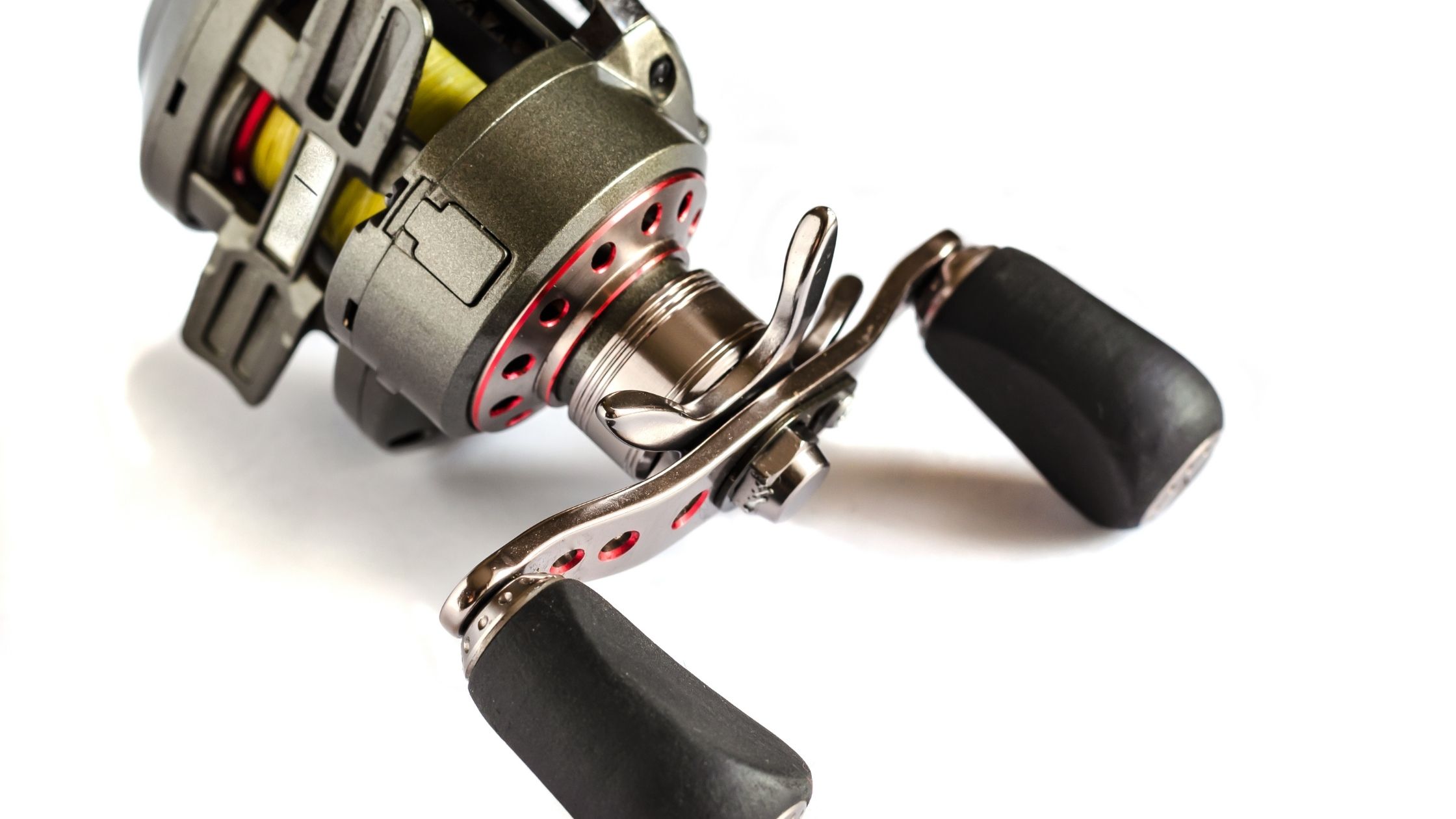
Baitcasting fishing reels are quite similar to the conventional reel, with the significant difference being that they are better for casting out your line. The best part about baitcasting fishing reels is that they often have braking systems to prevent backlash. While the braking system works, the angler will still need you to control the line with your thumb when casting. This prevents the dreaded ‘bird’s nest’ from forming on your spool.
These types of bass fishing reels are found in lower profiles and are better suited to freshwater fishing. They can be a little more difficult to cast than the spinning fishing reel and more prone to tangling. However, the light design works great in the hands of a seasoned fishing enthusiast.
Spincast Fishing Reels
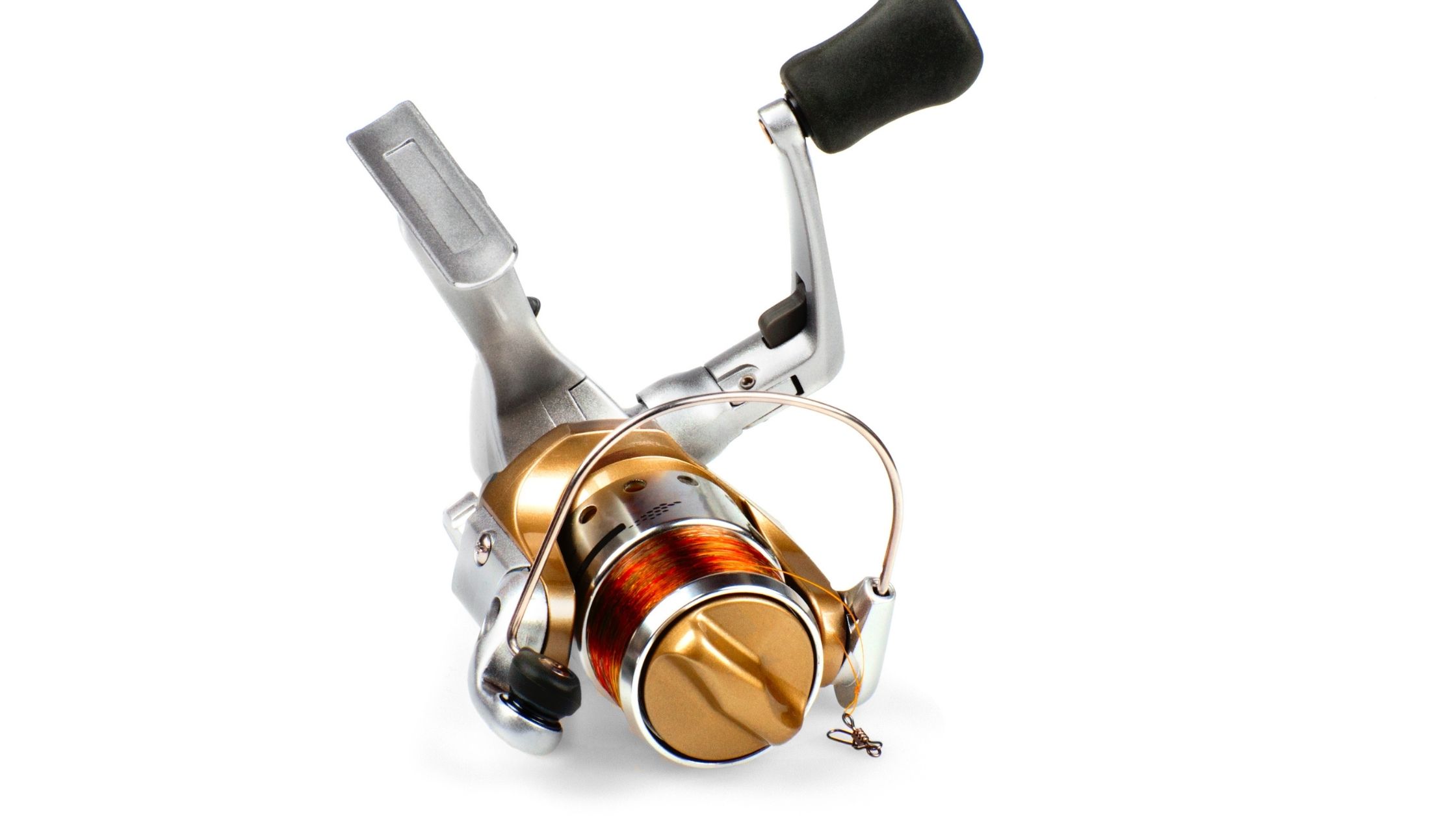
Lastly, we have the spin-cast fishing reel, which can be considered a hybrid between the spinning fishing reel and the baitcasting reel. It brings together the best properties of both of these reels, offering you a better and more enjoyable fishing experience.
Most anglers prefer using spin casting fishing reels. This is because it is a close-face reel that offers a high-efficiency level while also being easy to use. In addition, these reels come with an anti-reverse mechanism, made even better with ball-bearing smoothness. Its popularity is further increased due to its versatility, as this reel can be used with various fishing lines and levels of power.
How to Choose a Fishing Reel
Now that you know the basics of the different types of fishing reels, let’s look at the features you should look at before picking the best one for your fishing needs.
Saltwater Fishing Reels vs. Freshwater
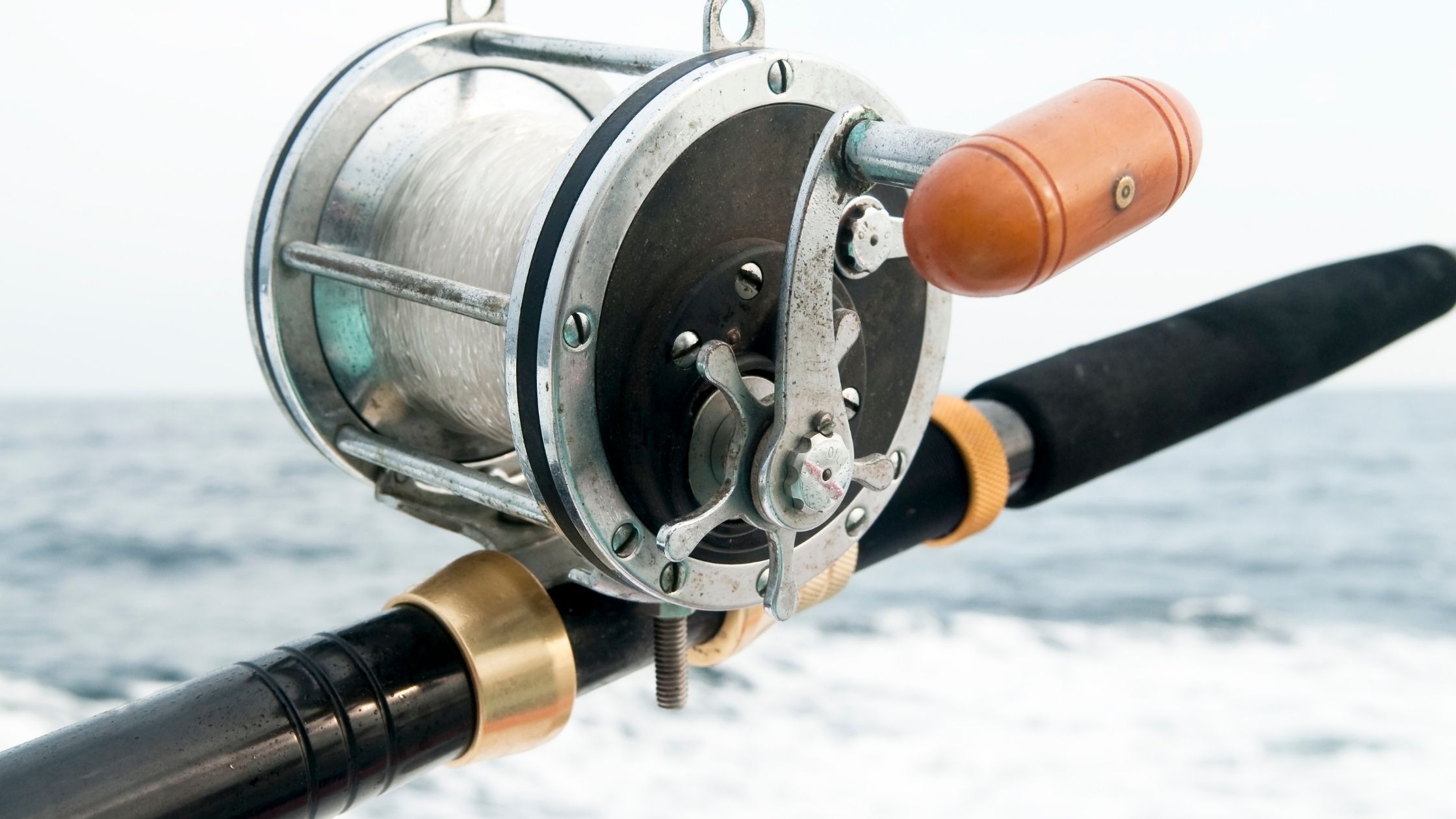
The type of water you’ll be fishing in should definitely be considered before you pick a reel. People who are new to the world of fishing often try to use the same reels for different types of water and end up regretting their experience.
Always keep in mind that different kinds of reels work differently in saltwater and freshwater. Your saltwater fishing reel will be designed with rust-resistant ball bearings so you can use them for a long time without worrying about carrion and rusting.
On the other hand, fly fishing reels are great for freshwater fishing. These don’t need aggressive protection against corrosion and often come at a lower price point.
Spool Capacity
When you’re choosing a reel, remember to think of the weight and capacity of line you will need depending on the species of fish you’re planning to catch. For example, deep, skirted spools can easily take longer and heavier lines, but shallow spools are easier to cast since the line comes off smoothly.
Reel Sizes
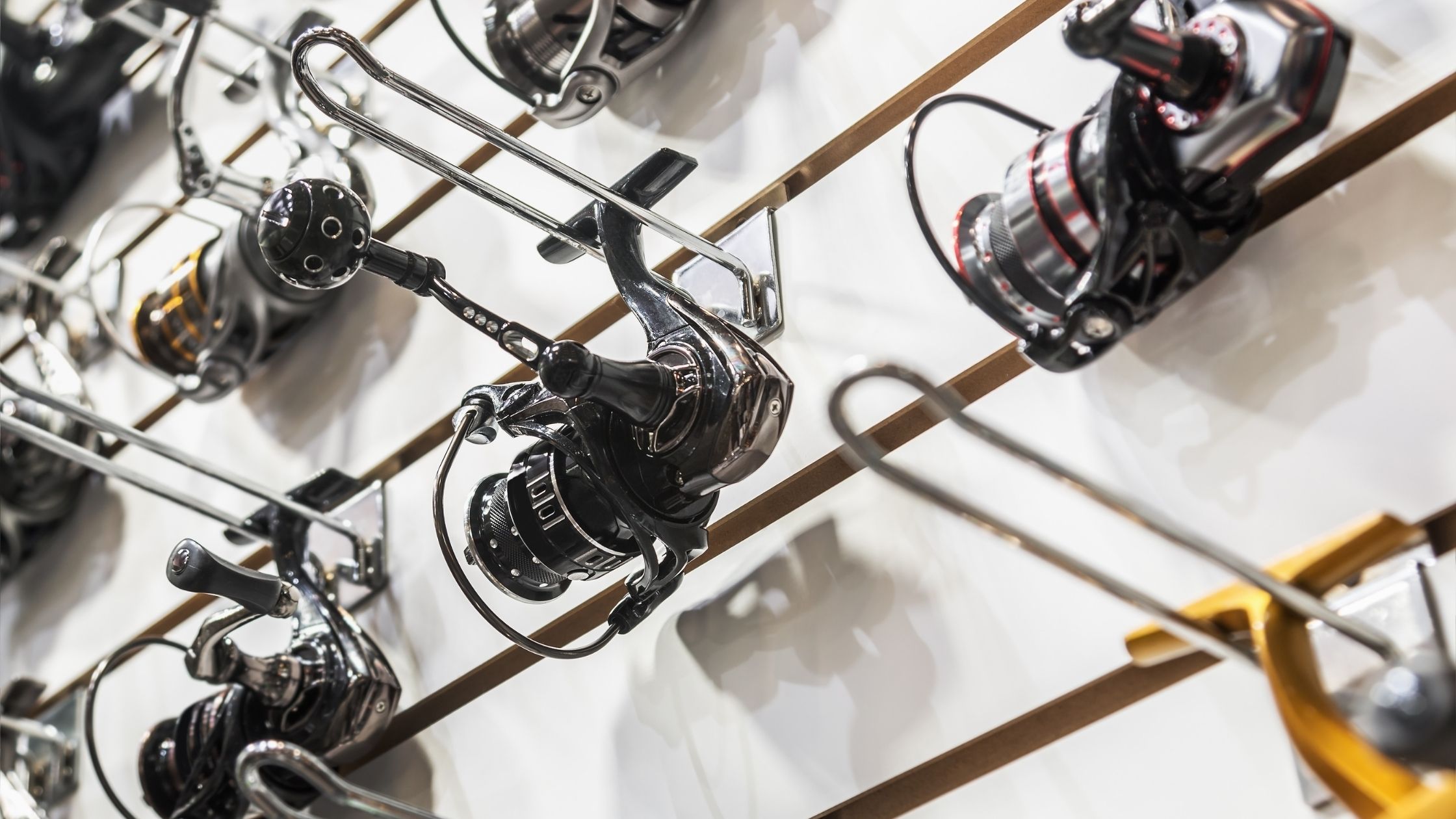
Another critical element to consider is your reel size. It is rather unfortunate that manufacturers disagree on standardized sizing. However, we have still offered you a rough estimate to serve as your guiding tool.
Most reels you look at will come with a number in their name. This number will end with a (or may) zero. Here is a breakdown of what these numbers, or reel sizes, indicate;
Reel sizes 500 – 3000
The smallest reels start at 500, perfect for extremely light angling like ice fishing or micro fishing. It will fit in your palm, and it is very easy to use. As you increase up to 3000 (also called 30 or 300), you reach the categories of light spinning reels for catching trout, catfish, and bass. The 3000 size is perfect for any angler fishing and can hold up to 20 pounds on lure or small bait.
Reel sizes 4000 – 6000
This is a step up to relatively bigger fish. You can use these reel sizes to catch big catfish, pike, and carp. They can also be used for heavier surf fishing and are a favorite among expert fishing enthusiasts.
Reel sizes 8000 – 10,000 and above
Into the 8000 + reel sizes stand specialized tools meant to handle big saltwater fish or the largest freshwater species. They can hold hundreds of yards of 100 pound braided the mainline and have superb stopping power with a drag pressure that can reach more than thirty pounds on tap!
Line Capacity
Your reel’s line capacity needs to be compatible with your rod’s capability and match up the kind of fish you’re catching. If you’re fishing small catches like bass, golden perch, or bream, a spinning fishing reel can do the job perfectly. However, for bigger fish, you will need a larger fishing reel with a higher line capacity; you’ll find it interesting to know about all the different types of fishing poles.
Bearing

One of the best ways to ensure you have a nice, relaxing fishing experience is by picking the reel with the right bearing. After all, nobody wants to deal with a lot of noise and vibration as they try to be one with nature!
A good quality spinning reel will have more bearings, ensuring a smooth, silent performance. This is especially important for saltwater fishing, and you need good quality bearings!
Types of Fishing Reels Additional Tips
You’re all set to have a great day of fishing under the cool, gentle breeze! However, be sure to consider all of these factors before picking the best type of fishing reel for your trip. Also, it would be best to keep in mind that the price of a fishing reel varies greatly depending on its features, warranty, and styling. Therefore, it is always wise to create a priority list of the features you’re after and which you can do without. This will help you get the best value out of your money and a good fishing reel that is well within your budget.
Another factor to consider is the quality of your rod. A super expensive fishing reel wouldn’t do much on a budget rod, and vice versa. So make the right choice and enjoy your trip!
Shop Fishing Reels Now
